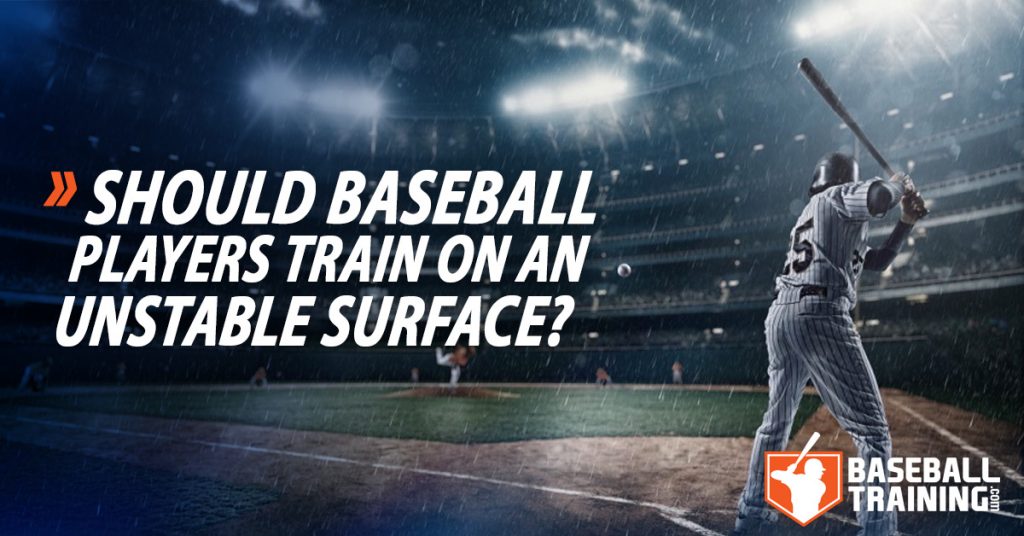Is your personal trainer telling you that you need to get on wobble boards and stability balls in order to make your training more “functional” or to increase the “core activation” of a given exercise?
If yes, I want you to consider a major problem…
The principle of overload is an idea of thought so well researched and deeply woven into the scientific literature of sports program design that it did in fact become a principle of programming.
Meaning, although the methods of programming may vary, the principles should always be constant.
Understanding Overload
Essentially, if you want to gain strength, muscle, or power; you must create sufficient overload on the body to stimulate it to change.
Meaning, you have to stress the body in a certain way in order to force it to adapt.
This fundamental principle is crucial to understand as research has already shown that a diminished force output (caused by being forced to used lighter weights since you’re on an unstable surface) will not produce an adequate overload, and therefore, strength training should in fact be done on a stable surface (1).
To put it simply, lifting weights while standing or kneeling on a stability ball or other unstable piece of equipment is a poor application of strength training because the environment created when doing so is not nearly as effective as being on a stable surface for stimulating gains in strength, hypertrophy, and power.
Getting Real About “Function”
Many trainers may look at the above and scoff because they claim that they aren’t using the unstable pieces of equipment in order to build strength, but instead, improve “functional performance”.
Unfortunately, the research suggests otherwise once again. And I quote (2):
“Resistance exercise performed on unstable equipment may not be effective in developing the type of balance, proprioception, and core stability required for successful sports performance. Free-weight exercises performed while standing on a stable surface have been proven most effective for enhancing sports-related skills”
If your goal is to improve baseball performance, you need to consider where you are standing.
Do you only play games during earthquakes?
Do you play your position on a tightrope?
Do you hit the ball while balancing on a big red ball you got from the circus?
Of course not.
The ground you live on, practice on, and play on is stable. The ground under you isn’t unstable, so why are you training as if it is?
This completely negates another one of the most important principles in sports science program design, specificity.
Yes, that’s right. Training in this manner is actually less-specific sports training rather than more sport-specific to baseball.
Also, don’t ever confuse a slippery surface (E.g. like if you played a game in the rain) with an unstable surface.
Since real functional training for athletes should always be about bridging the gap between the gym and the field (i.e. creating real transferability from your training to your baseball performance), it’s incredibly more functional to train on the same stable surface you live, practice, and play on.
The Future of Baseball Training
It was my intention with this article today to point out the major flaws in the current landscape of baseball strength and conditioning.
Standing on unstable surfaces is a learned skill, it’s no different then learning how to ride a unicycle.
You get good riding a unicycle by practicing, and you’ll get good at standing on a stability ball by practicing, but, both skills aren’t exactly useful to baseball athletes.
Consider that example even further; nobody would ever consider riding a unicycle to improve baseball performance in any way whatsoever.
Yet, they are targeting the same proprioceptive and neural pathways on a stability ball and calling it functional training.
Why is one different then the other?
They’re not.
Both of them don’t even come close to replicating the force production and neuromuscular coordination patterns of running, jumping, throwing, pitching, catching, or swinging a bat.
Why?
Because they completely lack specificity and overload, which are principles we should never overlook if we are going to create real baseball training program that work.
If you want to learn more about real functional training for baseball, check out my multi-article series breaking the sport movements down to their fine parts and providing you free workouts every step of the way:
1. Rotation
2. Throwing
4. Locomotion
—
Are you looking for a completely “done for you” baseball specific program to improve your performance?
Then I have what you’re missing, check out the selection of high-performance baseball training programs and start dominating your league today!
